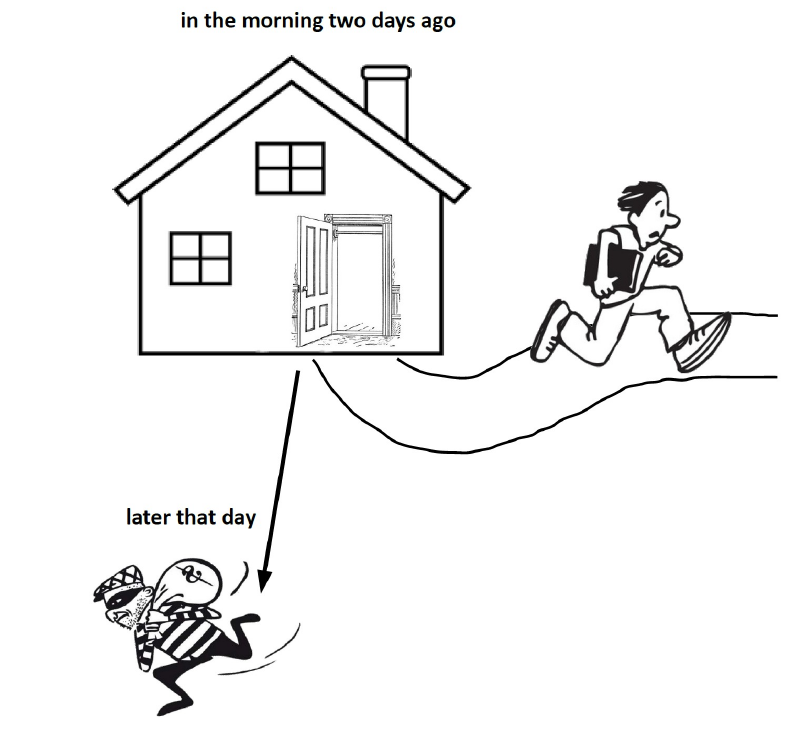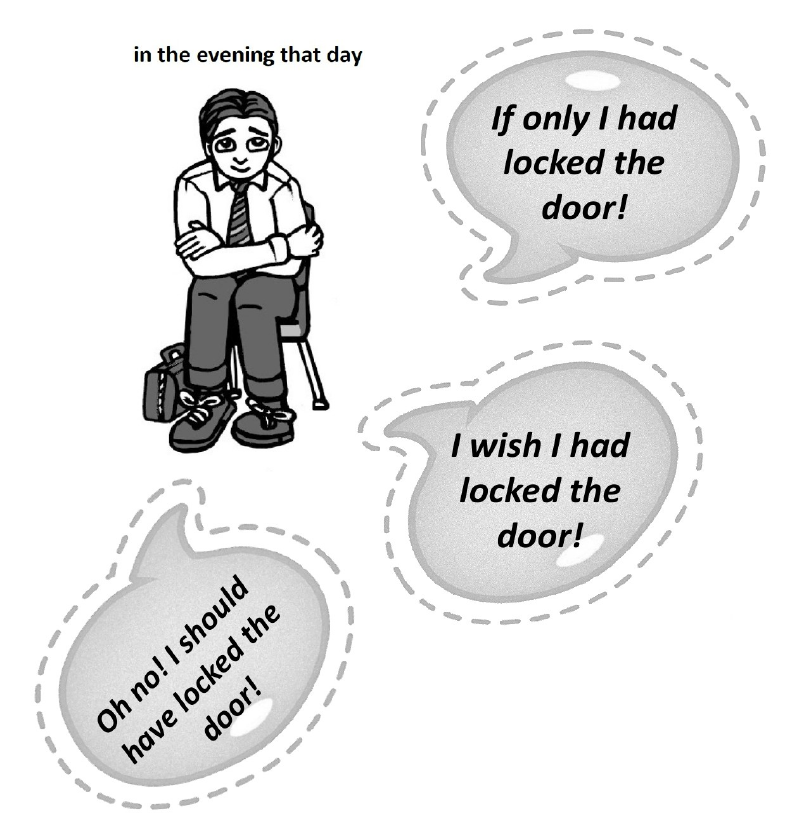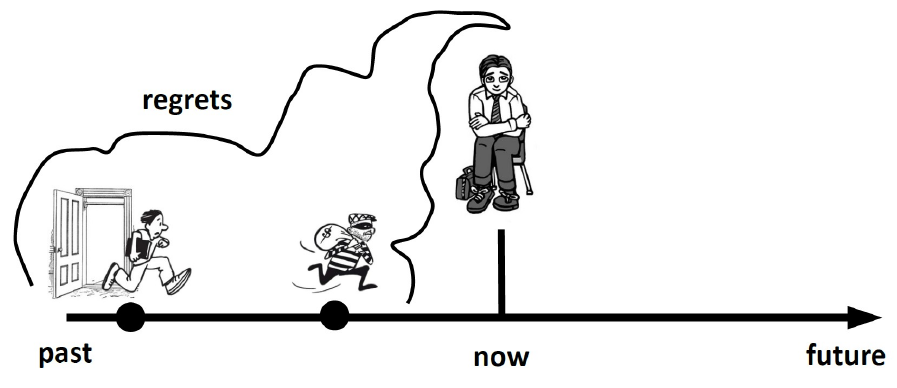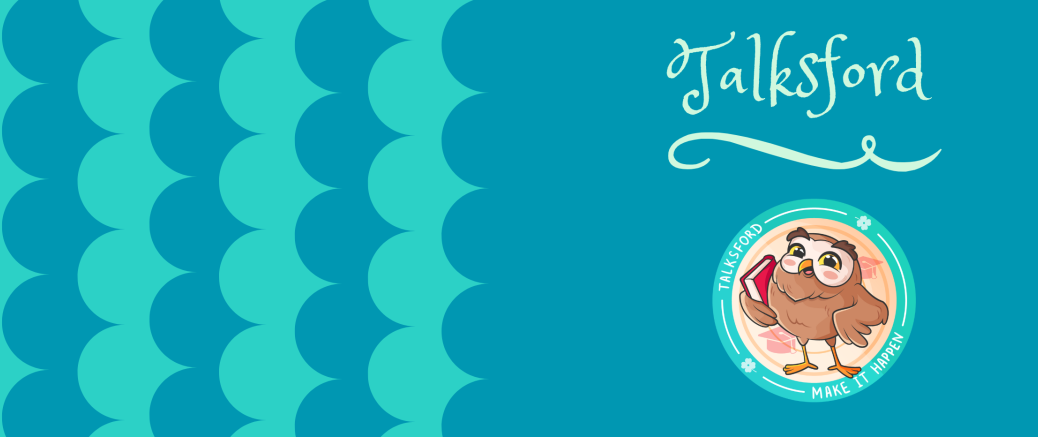Your students are about to learn how to express regrets about the past. How do you make this lesson engaging and easy to grasp? In this article, I present a creative and visually-driven approach that will not only help students understand the grammar but also make them feel how these expressions are used in real-life situations. You'll see how a simple story and a few pictures can become powerful tools for teaching structures like If only, I wish, and I should have.
Use pictures and drawings to establish the following context. Stick (or draw) the pictures on the board. Tell the students a short story.
Two days ago, early in the morning, my friend Richard was in a hurry because he had to attend a very important meeting. Richard left the house and forgot to lock the door. When he returned, he found that someone had stolen all his money. Richard was very angry with himself. He regretted that he hadn`t locked the door. He sat in the chair and said: …

Stick (or draw) the picture of a man sitting in a chair. Draw three speech bubbles next to him, and elicit ideas from the students. Ask them to describe how Richard might express his regrets about what happened in three different ways. If no one suggests any structures, provide them yourself.

Write the elicited sentences on the board. Then, ask CCQs (concept checking questions) to ensure the students understand the meaning of the structures used in the sentences.
- Did he lock the door? — No.
- Was it a good idea to lock the door? — Yes.
- Why? — Because someone stole his money.
- Does he regret it? — Yes.
Then, move on to elicit the structures used in Richard's regrets and model them on the board next to each sentence:
If only + S + had + Past Participle
S + wish + S + had + Past Participle
S + should + have + Past Participle
To make it clearer for your students, you can also draw a timeline to show how the actions unfolded in the past. This visual aid will help them understand the sequence of events and how the regret structures relate to past actions.

